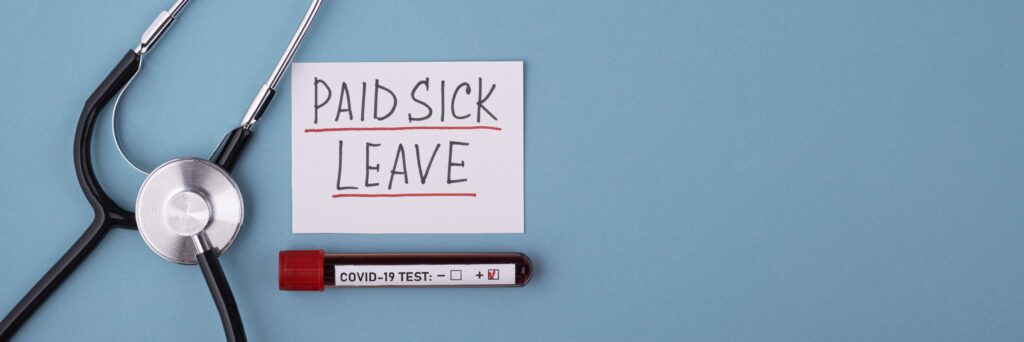The first round of Paycheck Protection Program (“PPP”) loans provided much needed capital to businesses struggling through the pandemic. President Biden and the Consolidated Appropriations Act, 2021 (the “Act”) have provided further assistance to employers. The Act allows employers with fewer than 300 employees a “second draw” of PPP loan funds, subject to certain criteria. The Act also expands several areas such as eligibility, allowable expenses, and forgiveness.
For the two-week period from February 24, 2021-March 10, 2021, only businesses with less than twenty employees may apply for PPP loans. An additional $1 Billion in PPP funds was set aside for businesses in low-income areas and independent contractors, sole proprietors, and self-employed individuals may now use gross income rather than net profits to calculate the loan amount.
Non-citizen small business owners, who are lawful U.S. residents, are now eligible for PPP loans. Additionally, the following business owners were previously excluded and are now eligible: (i) business owners delinquent on federal student loans and (ii) business owners with non-fraud felony convictions.
Eligibility. If previously applied for a PPP loan and would like a second draw, the business must satisfy the following criteria:
- no more than 300 employees;
- must have used or will use the full amount of first PPP loan on or before the expected date for receipt of second draw loan proceeds; and
- experienced at least a 25% reduction in gross revenues between 2019 and 2020.
Applications for a second draw began January 13, 2021 and will be available until March 31, 2021 or until appropriations expire.
New Eligible Businesses. PPP loan program expanded to new organizations, 501(c)(6) Organizations, and Destination Marketing Organizations, specific criteria must be met for eligibility.
Non-Eligible Businesses. Non-eligible include, but are not limited to, businesses with securities listed on a national security exchange, those primarily engaged in political or lobbying activities, or others that are ineligible under 13 CFR 120.110, unless explicitly permitted to receive PPP funds.
Loan Amount. The loan amount for a second draw PPP loan is a maximum of 2.5 times the applicant’s average monthly payroll, up to $2 Million. A second draw of a PPP loan may be forgiven if the borrower spends at least sixty percent (60%) of the loan on payroll costs to receive full forgiveness.
Small Businesses in the Accommodation and Food Service Industry. For small businesses in the accommodation and food service industry, like hotels and restaurants, there is an increase in the amount; the maximum loan amount is 3.5x average the monthly 2019 or 2020 payroll costs, up to $2 million as well. Additionally, if the business has more than one location, the business must employ not more than 300 employees per physical location to be eligible to receive a Second Draw PPP loan.
Allowable Expenses. Forgivable expenses are broadened to include essential due to COVID-19 guidelines, such as personal protective equipment for employees. In addition to the previous required eligible costs, the following is a nonexclusive list of added expenses: software, human resources and accounting needs, and property damage. Borrowers may PPP funds for the above-described expenses. Borrowers who have already submitted for forgiveness may not retroactively file another loan forgiveness based on the above.
Forgiveness. At least sixty percent (60%) of the loan funds must be applied to payroll costs and no more than forty-percent (40%) for nonpayroll costs, as provided under the PPP Flexibility Act.
Simple Forgiveness Application for Certain Borrowers. For a second draw loan amount up to $150,000, borrower may obtain forgiveness by submitting a one-page certification to their lenders describing the following: (i) number of employees retained due to the loan, (ii) estimates of the total amount spent on payroll costs, and (iii) total loan amount. Documentation is vital.
Cover Period. The cover period is time in which the funds must be spent. Borrowers can choose a cover period of eight weeks or twenty-four after such date of origination, which begins on the loan origination date, regardless of when the loan was obtained.
Tax Deductions. Expenses paid with PPP loan proceeds are tax-deductible and thus overrides the previous conflicting guidance provided by the IRS on deductibility.
Funds Available for Small Businesses. The Act sets aside $25 Billion for businesses that employ 10 or fewer employees and meet the eligibility criteria.
If you are obtaining for a PPP loan for your business or applying for forgiveness, consider contacting an attorney and your tax advisor. The eligibility and forgiveness requirements continuously evolve and all guidelines and requirements must be followed before submitting a PPP loan or forgiveness application. If you have any questions, Rosenblatt Law Firm can help.




